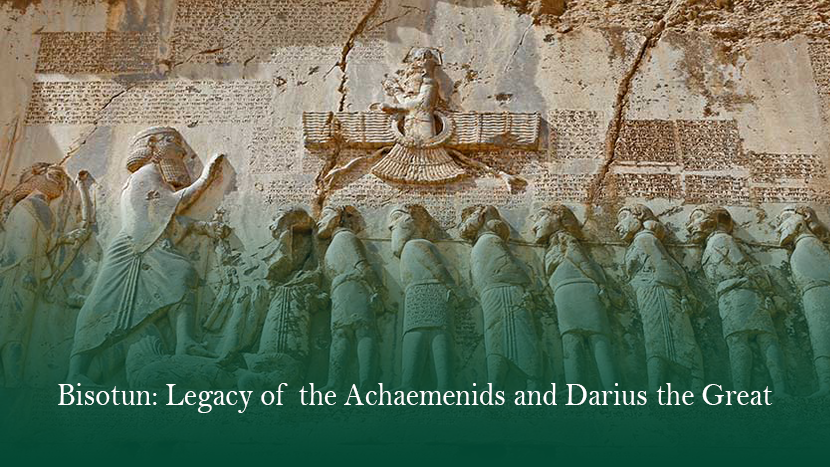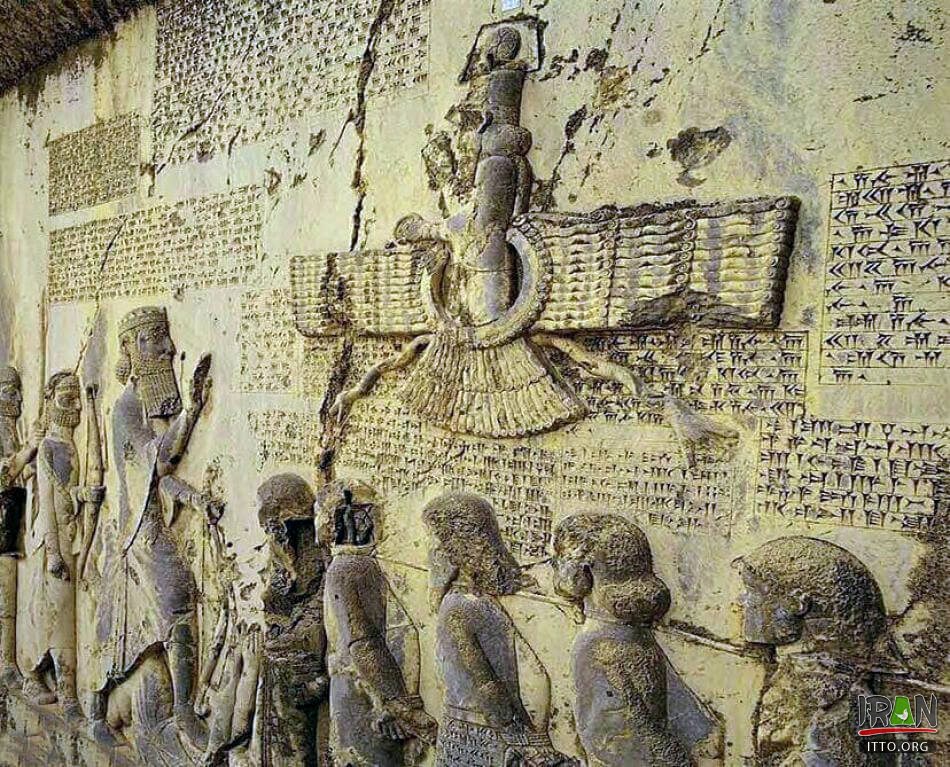
Bisotun: Legacy of the Achaemenids and Darius the Great
Nestled in the heart of Iran’s Kermanshah Province, Bisotun is a monumental testament to the grandeur of the Achaemenid Empire. Recognized as a UNESCO World Heritage Site, it is far more than an archaeological wonder—it’s a timeless symbol of cultural exchange, unity, and peaceful coexistence.
For centuries, this site stood at the crossroads of civilizations. In the past, it welcomed merchants, messengers, and travelers from far and wide, carrying with them the languages, traditions, and stories of distant lands. Today, it continues to inspire visitors with its artistic mastery and historical depth.
A Masterpiece of Ancient Art
The most iconic feature of Bisotun is the relief of Darius the Great, a stunning portrayal of the king victorious over his enemies. Every fold in the garments, every expression on the faces, and every gesture carved into the stone reveals the skill of ancient artisans and their meticulous attention to detail.
Alongside the relief, cuneiform inscriptions in Old Persian, Elamite, and Babylonian tell a story that bridges politics, culture, and art. These are not just words etched in stone—they are echoes of an empire that once spanned continents.
Strategic Brilliance in Architecture
Bisotun’s location was no accident. It stood on the main royal road linking the Persian heartland to Mesopotamia, a vital artery of trade, governance, and military movement. The choice of this site showcases the keen strategic sense of ancient architects, who understood the power of placing monumental symbols where the world would see them.
A Living Chronicle of History
The inscriptions of Darius offer a rare, first-hand account of the early years of his reign—rebellions crushed, alliances forged, and the consolidation of power in one of history’s greatest empires. They provide invaluable insight into the politics, military strategies, and diverse cultures that shaped the Achaemenid world.
The multilingual nature of these inscriptions reflects an empire built on inclusion and communication, where cultural diversity was not just tolerated but embraced as a strength.
A Journey Through Time
To walk among the cliffs of Bisotun is to step into the shoes of those who lived over 2,500 years ago. Here, art, history, and architecture merge into a single, breathtaking story—one that still speaks to the values of unity, resilience, and shared heritage.

A Symbol of Cultural Coexistence
A Multilingual Masterpiece
The Bisotun inscription speaks in three ancient tongues—Old Persian, Elamite, and Babylonian—reflecting the linguistic and cultural diversity of the vast Achaemenid Empire. It is a stone-bound reminder that peaceful coexistence among nations was not just an ideal, but a political reality over 2,500 years ago.
Embracing Diversity
The reliefs depict figures from different lands, each with distinctive clothing and facial features. These details capture the empire’s acceptance of cultural variety and its vision of a united realm where many peoples could thrive together.
Messages of Peace
The Image of Peaceful Power
While the relief of Darius the Great shows the king’s authority and military triumph, it also conveys a deeper message: the stability and peace that followed the suppression of rebellion and unrest.
Unity and Solidarity
The inscriptions emphasize the forging of unity across the empire—binding together nations under a common rule and shared sense of purpose. The story carved here is as much about cooperation as it is about conquest.
A Modern Message
Global Appeal
Today, Bisotun welcomes visitors from across the globe, continuing its ancient mission of bringing cultures together. Every traveler who stands before its carvings participates in a tradition of exchange that spans millennia.
Lessons from History
The legacy of Bisotun reminds us that history is not just about battles and kings—it is also about the enduring value of peace and collaboration among nations.
In our own era, Bisotun still has the power to stand as a universal emblem of dialogue, coexistence, and shared heritage—a message as vital now as it was in the days of Darius.
Traveling to historical cities is very rewarding and gives you the opportunity to discover the secrets of the past. Kermanshah and other ancient cities are areas full of historical wonders that will be attractive and exciting for any tourist. So be sure to put this region of Iran on your list of virtual tourism destinations (live and direct broadcast) and travel there with a relaxed mind and riding the waves.
If you have personally traveled to this location, please write your experiences and memories for us and other readers so that they can use these experiences to plan a dreamy and memorable trip.
By using form u agree with the message sorage, you can contact us directly now